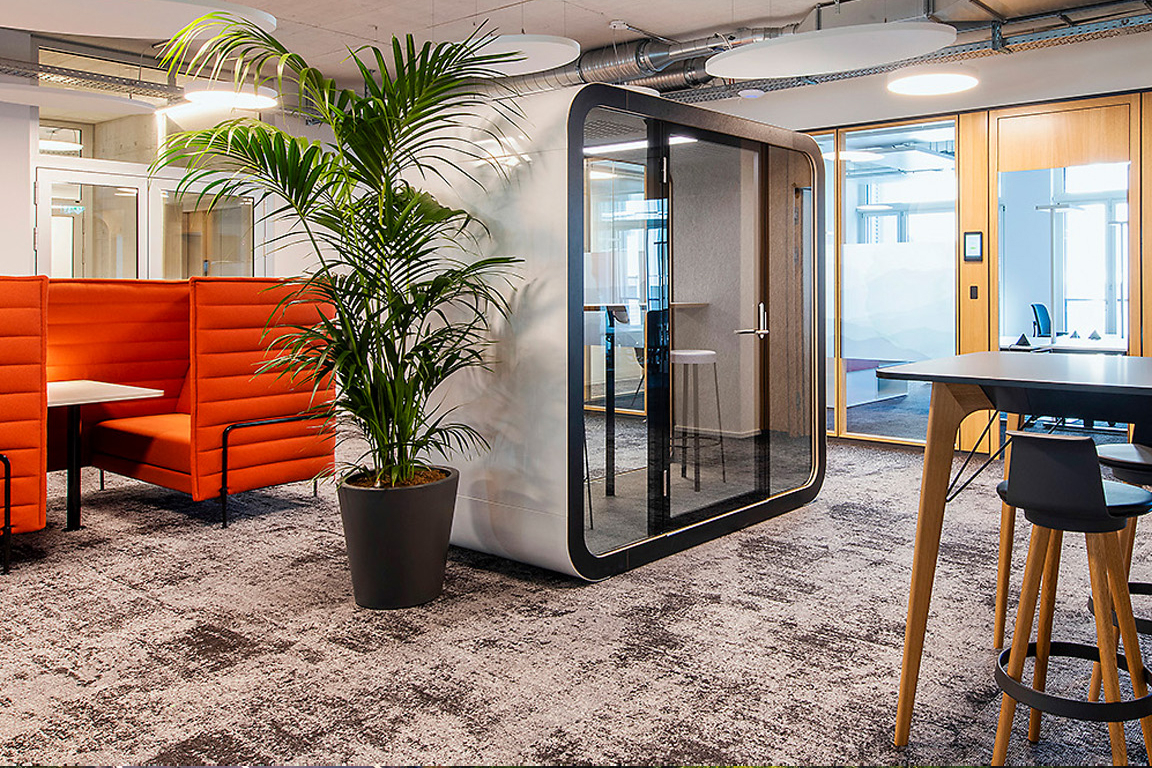
Office sector less affected by the pandemic
Switzerland's economic output has returned to its pre-pandemic level. In particular, those economic sectors with a traditionally high percentage of office workers have fared comparatively better during the pandemic because they had the option of allowing employees to work from home.
Overall, the office sector has consequently reported significantly more dynamic job growth (a plus of 1.8%) than the broader economy. The highest number of jobs were created in the area of business services. The retail, transportation, and hospitality sectors, by contrast, suffered the steepest declines in employment.
Home working trend dragging down demand for office space
The traditionally strong correlation between growth in office employment and demand for office space has come partially unraveled during the pandemic. Absorption of space is dragging for various reasons, including because it is taking longer than expected to overcome the pandemic and the home working trend has strengthened. Mobility data suggests that office commutes were still down approximately 15% in general as of the end of the third quarter.
Uncertainty leads to hesitant demand for office space
Despite relatively robust office job growth, many potential tenants hesitated to lease new space. However, the overall negative impact on office property demand was not as strong as expected because many rental contracts were extended.
What is more, the long, drawn-out process of returning to normal is making it all the more apparent that a centralized office plays an important role in communication and interaction within a company. Overall, we expect the additional demand, which has dropped by around 260,000 m² this year, to pick up again next year to approx. 360,000 m².
Supply of office space rising in city centers as well
Low demand is causing the amount of available office space to rise slightly across Switzerland. This trend is becoming most obvious in downtown locations. Over the last year, the overall office property supply rate has ticked up from 5.5% to 5.8%.
Uncertainties about the demand for space are also being reflected in the volume of investment in office building construction projects. At CHF 1,598 billion, the amount of investment over the past 12 months was roughly 17% lower than the long-term average.
The trend of remote working is likely to make the next several quarters challenging for the office property market. As work models become increasingly hybrid in the future, we still anticipate demand for office space to decline by around 15%. That applies especially to large properties and those located outside of city centers.
Nevertheless, the digital transformation of the world of work is also likely to have positive effects for providers of office space over the long term. Thanks to the increased need for office workspaces, they will be able to profit from sharply rising demand in the long run.
Falling demand for office space is temporary
The reduced need for office space caused by remote working is leading to lower demand for office space. At the same time, the number of jobs performed sitting in front of a screen in an office is increasing. Therefore, the percentage of office jobs is expected to increase significantly in every sector over the long term, resulting in correspondingly higher demand for office properties. According to our model, 10% job growth until 2060 would translate into a 42% rise in demand for office space over the same period. Taking into account a further decline in demand for office properties due to remote working, we ultimately predict that demand will increase by about 23% by 2060.